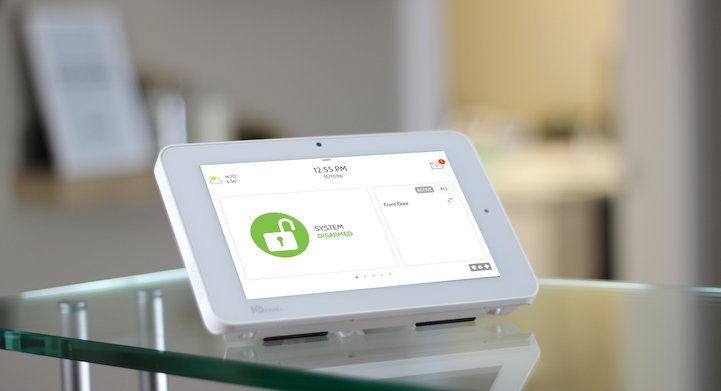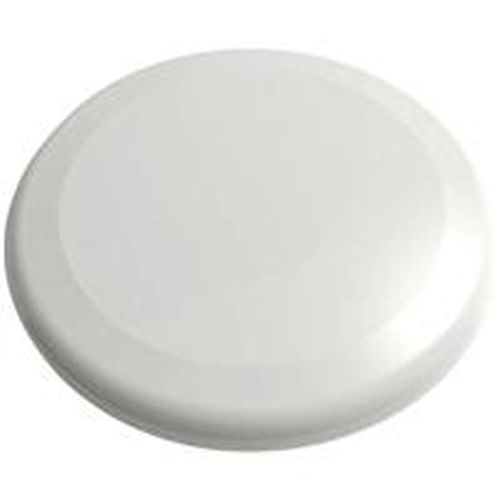When we work with new customers to beef up home security, we always include the installation of a monitored burglar alarm. These systems provide multiple layers of security. First, they create a blaring siren response upon an alarm activation. This alerts anyone onsite of the issue, and often scares intruders away. Additionally, a monitored alarm also communicates with our central station. In turn, this can lead to an emergency dispatch if nessary. Moreover, we also offer many security components that go even beyond providing burglar-related security! These invaluable security features make installing an alarm a security “no-brainer.” Throughout our thirty-five years in business, we’ve helped over a thousand customers design alarm systems that fit their security needs. In this post, we share some tips or designing an effective home alarm.
First, we’ll focus on the importance of choosing the right alarm components for your application. This discussion will include a look at finding the right alarm panel, as well as an overview of the many security sensors we have at our disposal. From there, we’ll look at choosing additional equipment to provide extra security. For example, we offer equipment that offers both life safety and detection of weather-related issues. Now, let’s dive in with a primer on selecting the right alarm equipment out of the gate.
Choosing the Right Alarm Components
We help our customers make a few major decisions when we work with them to design an alarm. In this section, we’ll look at the most common and “pressing” options you have. First, we’ll take a look at choosing the alarm panel and keypad that fits your security needs and gives you the user experience you desire. Then, we’ll review the array of security sensor options that we have at our disposal.

The QOLSYS IQ Panel has a modern touchscreen interface that many customers prefer over older button-dependent keypad models.
Find the System That Works for You
When designing an effective home alarm, we must begin with the “brains” of the operation. A security system’s panel contains the electronic equipment that makes the entire alarm function. It also determines what types of sensors we can install, and how you operate your alarm. For example, some panels lean towards a focus on hardwired equipment. This is ideal for installations that occur during a property’s construction, when we can run wiring before the walls are up. On the other hand, some alarm panels require the use of wireless sensors. We often install these panels in houses or in smaller commercial applications that don’t present issues caused by wireless range limitations. Providing the best of both worlds, many alarm systems now allow for the installation of both hardwired and wireless sensors!
Additionally, we also work with customers to choose the keypads that work best for them. Many customers prefer modern touchscreen keypads that work similarly to smartphone and tablet screens, such as the pictured model by QOLSYS. This format gives customers the familiarity of a control scheme they already use every day. However, some customers prefer a more traditional, button-based keypad scheme. We recommend this option for heavy-duty commercial installations, especially in settings that can get grimy. Next up, let’s look at a few options for security sensors.
Utilize the Full Array of Security Sensor Options
When we install a security system, we always make sure to secure certain areas. For example, we put a sensor on every exterior door to alert you to this common type of security breach. We also make sure to install sirens in a manner that allows you to hear them from any part of the house. However, customers still have quite a bit of input on how they secure their property from there.
For example, some customers simply install motion detectors in main areas of their homes. This provides the most cost-efficient security, while also ensuring that nobody can walk throughout the house uninvited. Unfortunately, this approach still lets thieves enter your home through a window before activating an alarm. Therefore, we also offer equipment that catches suspicious activity before anyone breaches your home.
One way we can create this security involves installing window sensors to catch someone opening the window. As added security, we can also install glass break detectors to secure rooms with picture windows or sliders. To really provide the “Fort Knox” treatment, we can even install security screens outside your windows to catch a burglar cutting or removing a window screen! For more security system equipment ideas, check out our post on Specialty Security Sensors. Let’s now turn our attention to some more unique alarm equipment options.
Taking Advantage of Non-Burglary Related Equipment
Of course, there’s a good reason why we generally refer to a home security system as a “burglar alarm.” After all, most customers install this equipment for the main purpose of deterring a break-in. However, we often surprise people with the amount of non-burglary related security equipment we can install. In this section, we’ll see how designing an effective alarm can involve installing these types of products as well. First, we’ll take a peek and some life safety-related security products. From there, we’ll focus on some environmental security products that tie in to your alarm.
Add Life Safety to Your Home Alarm
While most alarm customers focus on thwarting break-ins, this does not represent the largest threat that residents of any home face. After all, fire and carbon-monoxide emergencies can threaten the well-being of your entire home, as well as anyone in it. Luckily, we can install devices that interact with your existing security system to secure you against these threats! We offer both monitored smoke and carbon monoxide detectors for your home.

Environmental sensors, such as this combination freeze and flood sensor by Interlogix, can alert you to both frozen pipes or water in your basement.
These detectors will create a siren response that can wake you up and alert you to an emergency, allowing you to escape. Additionally, our detectors’ sensing the presence of smoke or carbon monoxide will create a response from the local fire department. The life safety offered by these devices make them a powerful add-on to any home security system. Of course, there are other outside factors that can threaten your home, especially during an extended absence. Let’s see how adding weather-related alarm sensors can add security against these threats.
Install Security Equipment to Monitor Your Home for Weather-Related Damages
In addition to burglar and life safety security, we also offer equipment that picks up on potential weather-related issues in your home. For example, we can install water-detecting sensors that can alert you to flood conditions at your house. Furthermore, we also install low-temperature detection that can create a central station response to dangerous conditions in your home. These sensors allow you to get someone out to check on the situation in your absence. For our customers with wireless alarm sensor capabilities, we can even install one single sensor that detects both low temperatures and the presence of water! This sensor allows for an extremely cost-efficient way to secure yoru home against two of nature’s most damaging threats.
Putting it All Together and Designing an Effective Home Alarm
We hope that this post helps you with designing an effective home alarm. Additionally, we encourage you to contact us with any questions this post may raise for you. We will happily answer any security-related inquiries you may have. Moreover, we also invite you to take advantage of our free site survey program. We offer free security audits and equipment quotes to both new and existing customers alike. While on site, we can address any security concerns you may have. Furthermore, we can make suggestions based on our own observations of your property as well.
Perhaps you have an alarm in place and wish to incorporate some of the tips you’ve read here. Or, maybe you do not have much in the way of security equipment, and want help in designing an alarm from the ground up. Either way, we are here to help! Together, we can create a home alarm system that keeps you, your most valuable possessions, and your family as safe and secure as possible.
